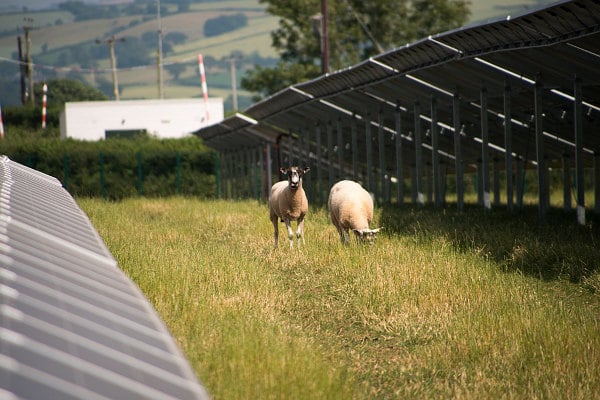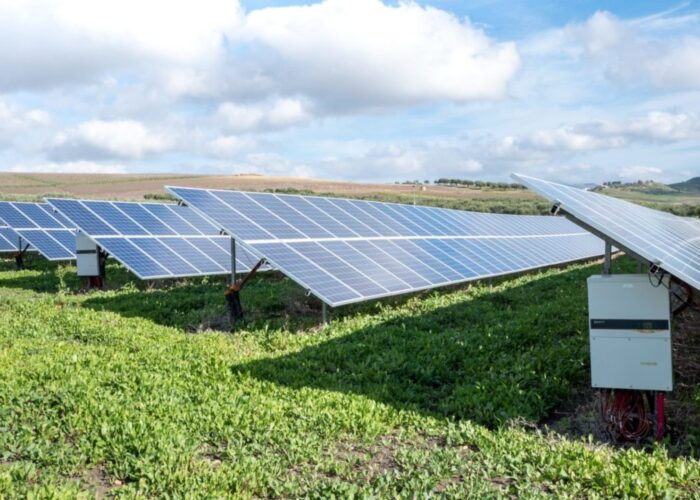
ESG obligations are helping to drive the implementation of biodiversity at solar farm sites, according to experts from UK-based law firm Foot Anstey, but questions remain over what happens to sites at the end of their operational lifespan.
Christian Silk, head of infrastructure planning at Foot Anstey, says that biodiversity and the creation and protection of animal habitats at solar farm sites is now an intrinsic part of project development, whether this is on a voluntary basis or considered necessary to mitigate the impact of developments on the local environment.
Unlock unlimited access for 12 whole months of distinctive global analysis
Photovoltaics International is now included.
- Regular insight and analysis of the industry’s biggest developments
- In-depth interviews with the industry’s leading figures
- Unlimited digital access to the PV Tech Power journal catalogue
- Unlimited digital access to the Photovoltaics International journal catalogue
- Access to more than 1,000 technical papers
- Discounts on Solar Media’s portfolio of events, in-person and virtual
“Because there’s a perceived potential loss of biodiversity or habitats, it’s entirely standard that in most cases solar farm developers will have to provide some type of mitigation for what might be lost,” he says.
“It’s entirely standard and ingrained in the thinking of solar farm developers from the outset that that they will need to possibly at the very least mitigate, but in many cases, also enhance the circumstances of the site.”
These mitigations and enhancements can include providing habitats in adjacent land to the solar site or in it, with measures such as hedgerow planting, the creation of ponds, tree and shrub planting, the installation of bird and bat boxes and the planting of wildflower meadows just some of the options open to developers.
While this can be driven by specific biodiversity regulations on energy generation developments, Silk says that for many of the more established project developers and investment funds, it’s actually a standard element of their business values. Their business is more than just renewable energy, for example – it’s also about the wider impact on the environment.
“What they will have embedded in their approach to business is that where they’re going to build solar farms, they’re not just contributing by developing renewable energy sources, they’re also going to go that step further and embed ecological improvement and improvement of natural capital as a standard part of their approach to business.”
Silk says that for investment funds in particular, ESG-related objectives and outcomes are a key part of what attracts investors to those funds. Indeed, Kutahya Cherry, managing associate at Foot Anstey, says that ESG is becoming “ever more important” when it comes to utility-scale renewables.
“It’s not good enough now for it just to be a renewables project and therefore say that it is ESG; yes that ticks the larger scale, clean energy environmental box, but it needs to be looked at on the local scale, for its environmental and ecological impact as well,” she says.
This then feeds back into community engagement, with solar able to provide things that are important to local communities such as the increased biodiversity of sites and creation of animal habitats. Even the provision of wildflower meadows for pollinators such as bees can create a more supportive local view of a development, supporting the site as it moves through the planning process.
“Bee habitats are a really great example of one of the things that communities really want to support,” Cherry says.
“There’s all sorts of things that are happening which are helping get investment into the renewable market and solar market, because it’s ticking more and more boxes of that ESG criteria, which are becoming generally more and more important.”
But the benefits don’t just extend to the local communities; Cherry says that the potential revenue streams from these sorts of additional uses and benefits from biodiversity net gain capability on a solar site are being looked at, with a move towards monetising that gain in a credit scheme.
However, in the UK at least this is very early days, she says, with uncertainly currently hanging over how secondary legislation on this will land, making it “all a bit wishy washy at the moment”.
“But we’re certainly seeing multiple clients looking to how that land use could be monetised and considering who should benefit from those revenue streams.”
This does raise questions moving forward about what happens at the end of a land lease. As Cherry says: “It’s about thinking if you’ve got these credit schemes going forward, and there are time requirements on those schemes, particularly in terms of carbon capture and natural capital, how that fits in a lease with reinstatement obligations. Does it fit?”
Typically, leases require the land to be returned in the state it was at the beginning of the term of the lease, with those leases often lasting for significant terms of 30, 40 or 50 years, Cherry says.
“If you’ve spent significant effort to improve the land from a particular biodiversity perspective or carbon perspective, there shouldn’t really be an obligation to reinstate the land back to what it was before, because it would be effectively putting it back into a worse state.
“There’s lots of discussions going on about that. I don’t think the market has really landed on what will become market standard, or if there will be market centred on that,” she says.







